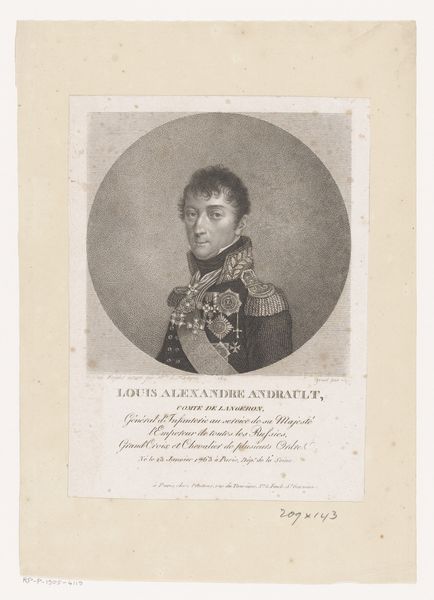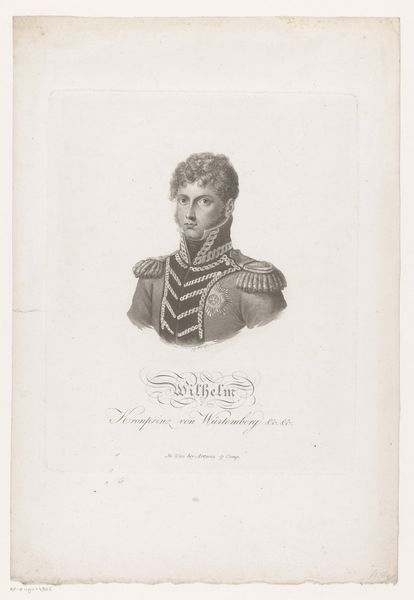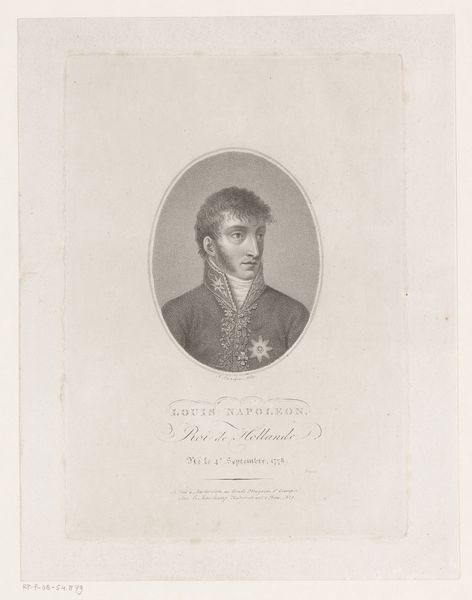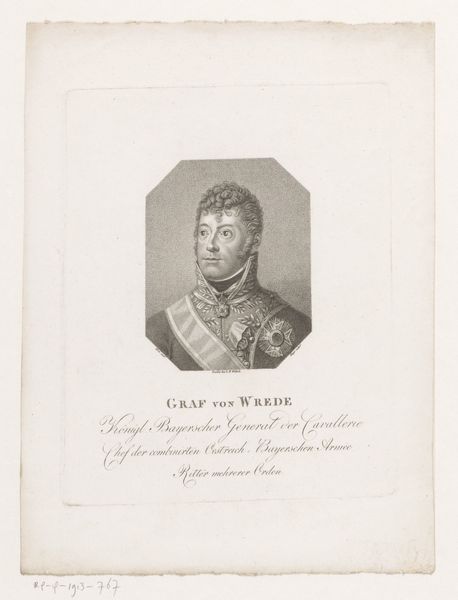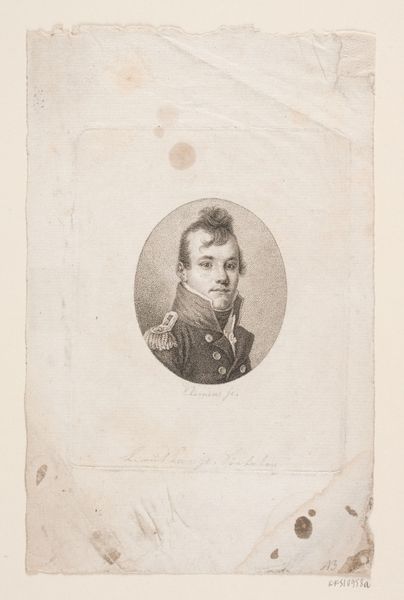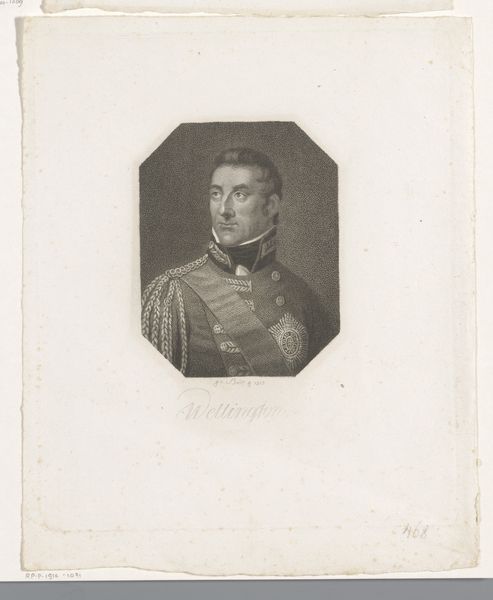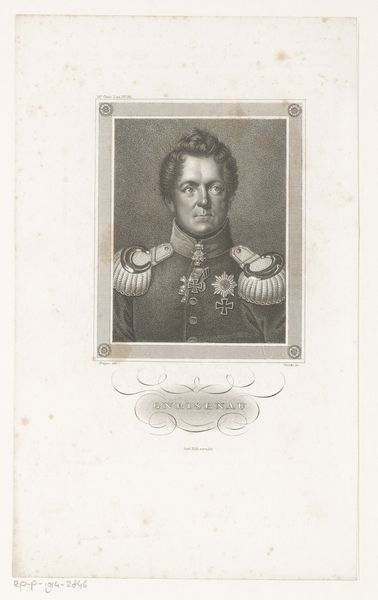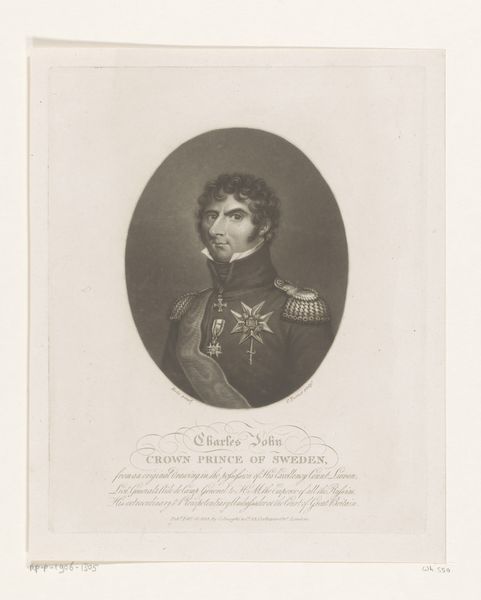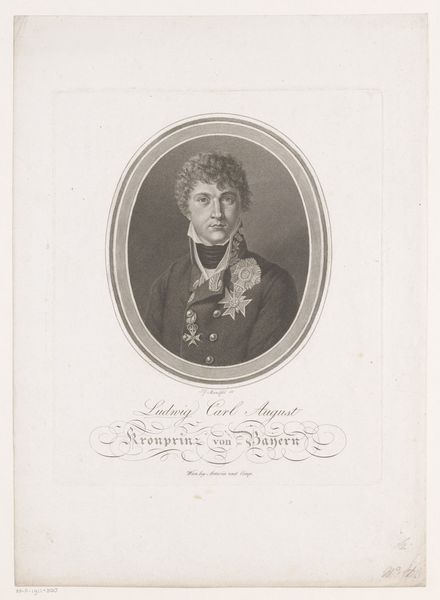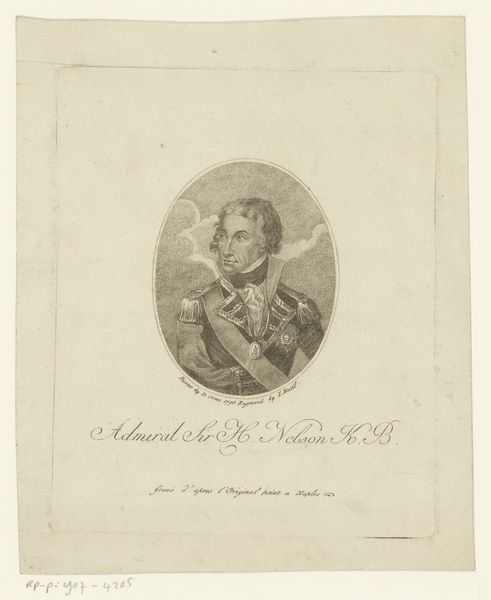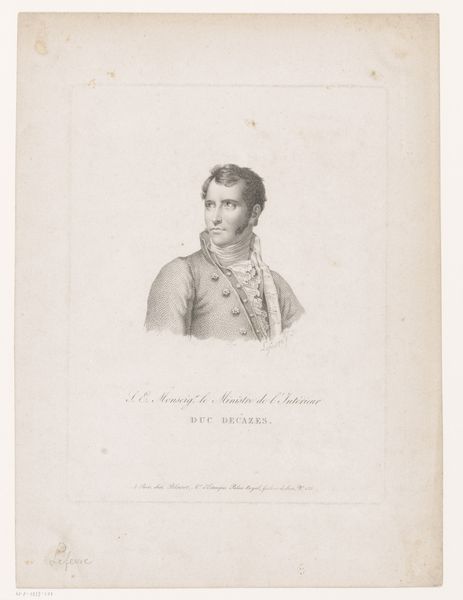
drawing, paper, engraving
#
portrait
#
drawing
#
neoclacissism
#
paper
#
engraving
Dimensions: height 265 mm, width 214 mm
Copyright: Rijks Museum: Open Domain
Curator: This is Johann Georg Mannsfeld’s "Portret van Carl Philipp von Schwarzenberg," created between 1774 and 1817. It’s an engraving on paper depicting a formal portrait bust within an oval frame. Editor: There's a subdued feeling about this piece. The tight framing of the bust, the detail in the rendering of Schwarzenberg’s features and military regalia are certainly interesting. The engraving marks are clearly visible throughout. Curator: Mannsfeld, as a printmaker, was clearly engaging with the mass reproduction potential of engravings, serving a market hungry for images of important figures such as military leaders. The work emphasizes the value placed on specific craftsmanship, highlighting the societal function and political environment. The linear details create impressive tonal variety from a fairly limited palette of whites, blacks, and grays. Editor: Right, and consider Schwarzenberg himself, an Austrian field marshal and diplomat. This portrait can be interpreted through the lens of power and identity. Notice how his uniform and decorations signify not just military status, but also imperial power at a particular time and place, the complex web of alliances. This image solidifies his presence, literally inscribing him into history. Curator: That inscription relied heavily on material choices and artistic processes. The paper support, the quality of the ink, the skill of the engraver--each element contributes to its dissemination and lifespan. We must consider Mannsfeld’s access to materials, workshops and commissions, shaping his work, as he translated Schwarzenberg into reproducible form. Editor: Yes, and from an activist point of view, we can also ask who this image was *for*. What social classes were consuming these kinds of portraits? How did it influence notions of patriotism or allegiance during the Napoleonic era and afterward? Its circulation surely impacted concepts of national identity within the Austro-Hungarian empire. Curator: Indeed, reflecting the means and reception highlights its role within larger economic systems of patronage and dissemination. It certainly reflects skilled handwork, especially looking closely at the fine rendering around Schwarzenberg's collar and ribbons. Editor: Considering these contextual layers and artistic details gives us a far deeper understanding of this piece as a cultural object, and Schwarzenberg’s place in early 19th century society. Curator: Absolutely. Examining the labor and material involved elevates our perspective from a surface-level appraisal toward broader contextual understanding of its societal functions.
Comments
No comments
Be the first to comment and join the conversation on the ultimate creative platform.

